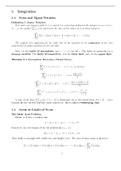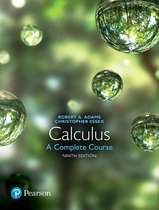Summary
Summary Calculus 2 Notes (Integral Calculus)
- Institution
- University Of British Columbia (UBC )
- Book
- Calculus
I have summarized Chapters 5, 6, 7, 8, and 9, along with differential equation notes (labeled chapter 10 in my notes) spread out across the book. This is more rigorous than a standard course in integral calculus. I wasn't a fan of the calculus 2 offered at my school, so I followed the textbook of U...
[Show more]




